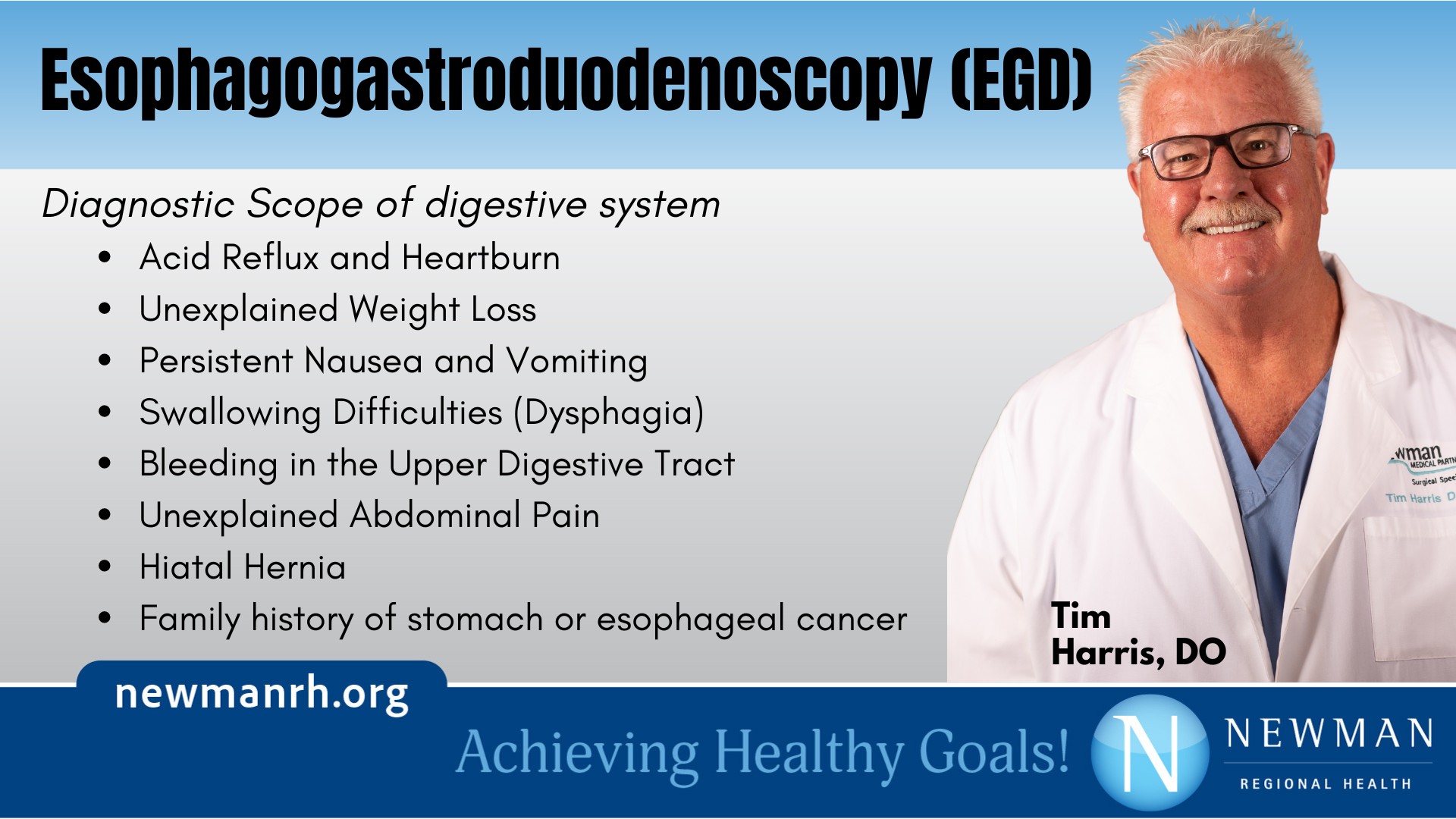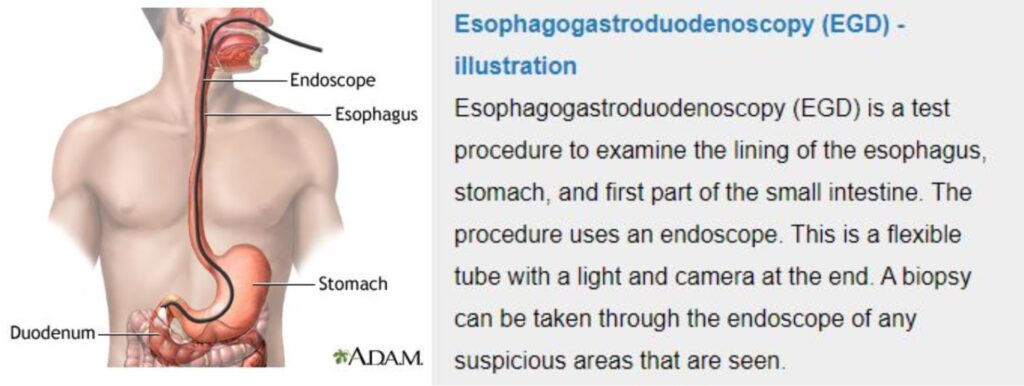EGD Esophagogastroduodenoscopy

Our digestive system works to break down food and absorb nutrients. Sometimes, things go wrong, causing discomfort in our upper abdomen. This is where an EGD can help – a diagnostic tool to evaluate the upper digestive tract.
An EGD, also known as esophagogastroduodenoscopy, is a minimally invasive procedure. A thin, flexible tube equipped with a camera is gently inserted through the mouth and navigates its way down the esophagus, stomach, and the first part of the small intestine (duodenum). The camera transmits live images onto a screen, allowing doctors to examine the lining of these organs for abnormalities. This usually takes under 10 minutes, and you are lightly sedated through the procedure.

But what does an EGD detect? The list encompasses a range of conditions:
- Acid Reflux and Heartburn: A burning sensation in our chest, commonly known as heartburn, stems from gastroesophageal reflux disease (GERD). An EGD can pinpoint the presence of GERD by visualizing inflammation or ulcers in the esophagus caused by stomach acid.
- Unexplained Weight Loss: When weight loss occurs without any changes in diet or exercise, it can be a cause for concern. An EGD can help identify potential culprits, such as tumors, narrowing of the esophagus (strictures), or other causes.
- Persistent Nausea and Vomiting: An EGD can investigate the cause, whether it’s ulcers, inflammation, or blockages in the digestive tract.
- Swallowing Difficulties (Dysphagia): The inability to swallow smoothly can be a sign of an underlying issue. An EGD can help diagnose the cause, such as esophageal strictures, tumors, or even neurological problems.
- Bleeding in the Upper Digestive Tract: Blood in the stool (dark, tarry stools) or vomit (bloody or coffee-ground colored) can be alarming. An EGD can pinpoint the source of the bleeding, which could be ulcers, esophageal varices (enlarged veins), or even tumors.
- Unexplained Abdominal Pain: Persistent pain in the upper abdomen can be a puzzle. An EGD can visualize the lining of the organs, revealing ulcers, inflammation, etc that might be causing discomfort.
- Anemia: When our hemoglobin (blood in our body) decreases, it’s called anemia. An EGD can be used to investigate if the anemia is caused by chronic bleeding in the upper digestive tract.
- Hiatal Hernia: This occurs when part of the stomach pushes through the diaphragm. This is common. An EGD can confirm the presence and severity of a hiatal hernia. A hiatal hernia can also lead to worsened heartburn/GERD.
- Family history of stomach or esophageal cancer: An EGD can be used as a screening tool to investigate your esophagus/stomach for cancer.
An EGD is not without its limitations. It cannot diagnose conditions beyond the upper digestive tract, and some biopsies taken during the procedure may require further testing. However, it remains a powerful tool for endoscopists to evaluate the digestive system and leading to proper diagnosis and treatment. This can be added even during your regular screening colonoscopy procedure pending your symptoms.
Risks of the procedure are rare but include (not limited to) bleeding, infection, injury to surrounding structures, missed lesions, perforation, etc.
If you’re experiencing any of the symptoms mentioned above, consult with your primary care doctor or call your NRHMP Surgical Specialists office today. They can determine if an EGD is the right course of action for your individual health care needs.




